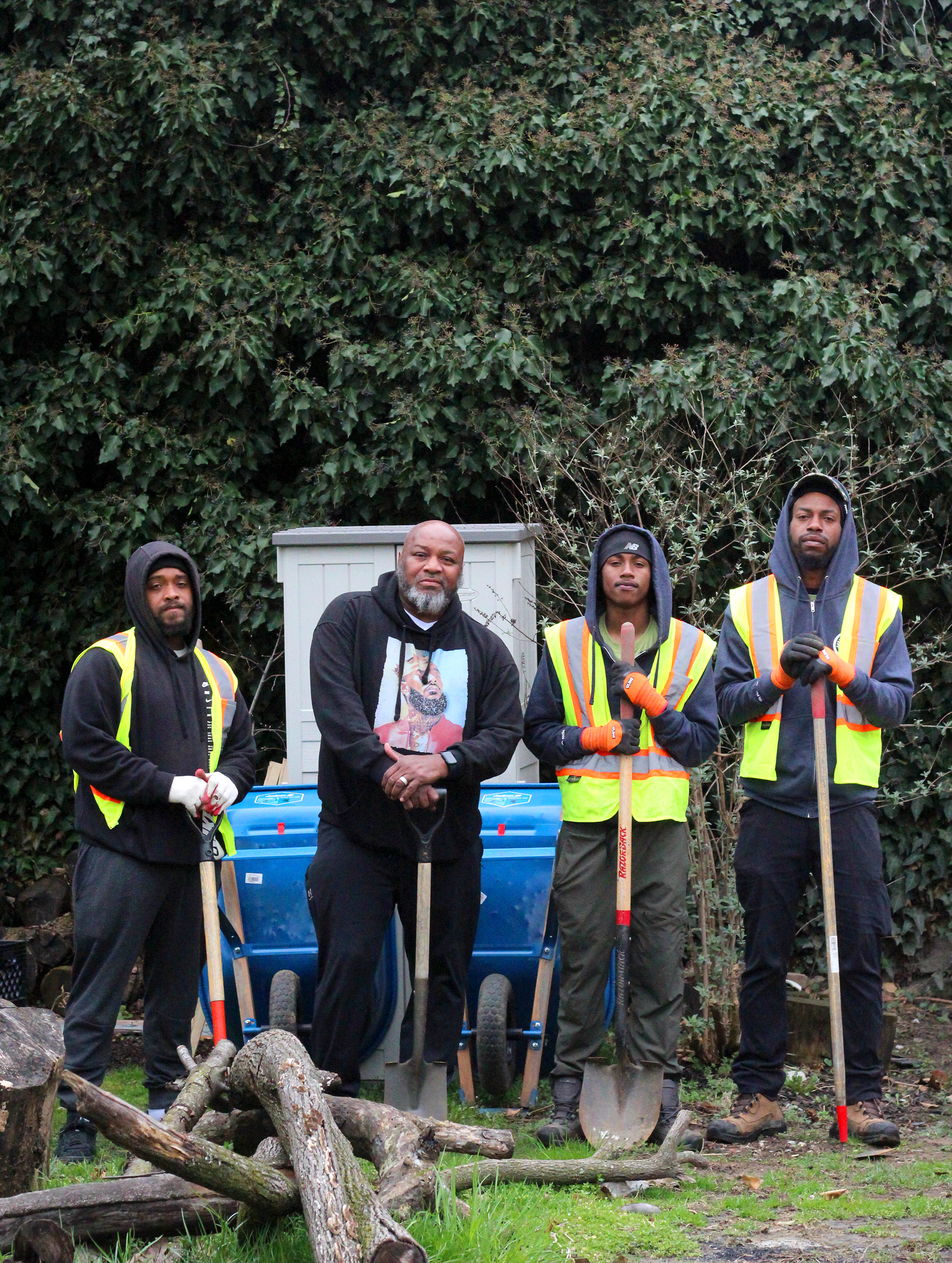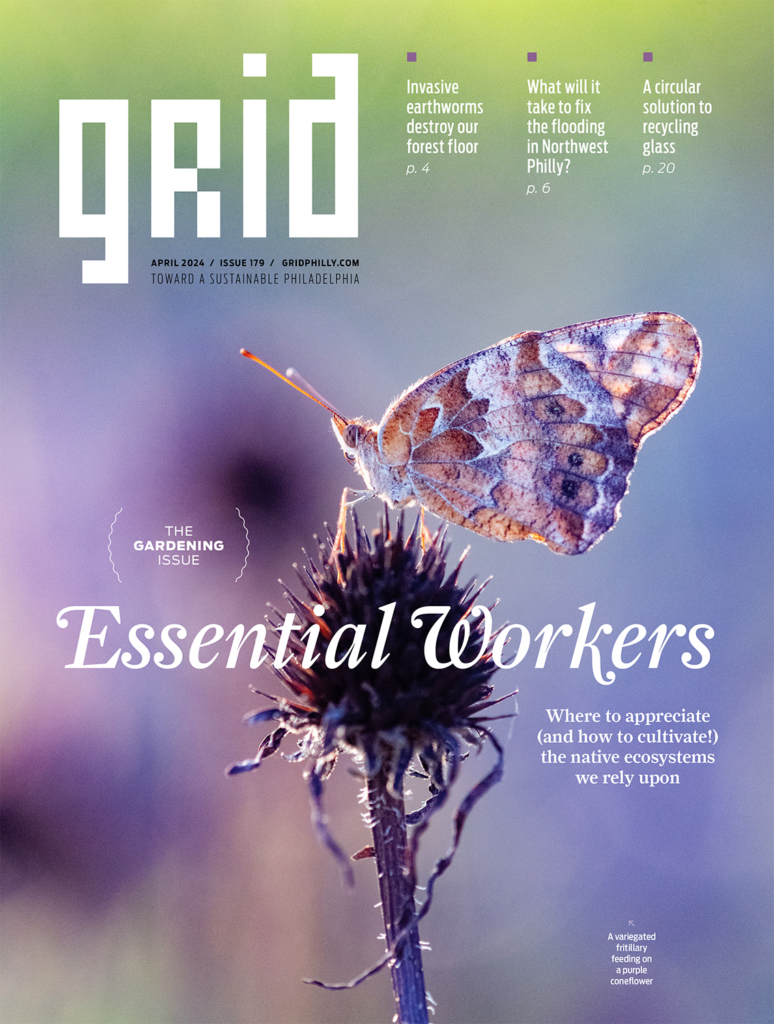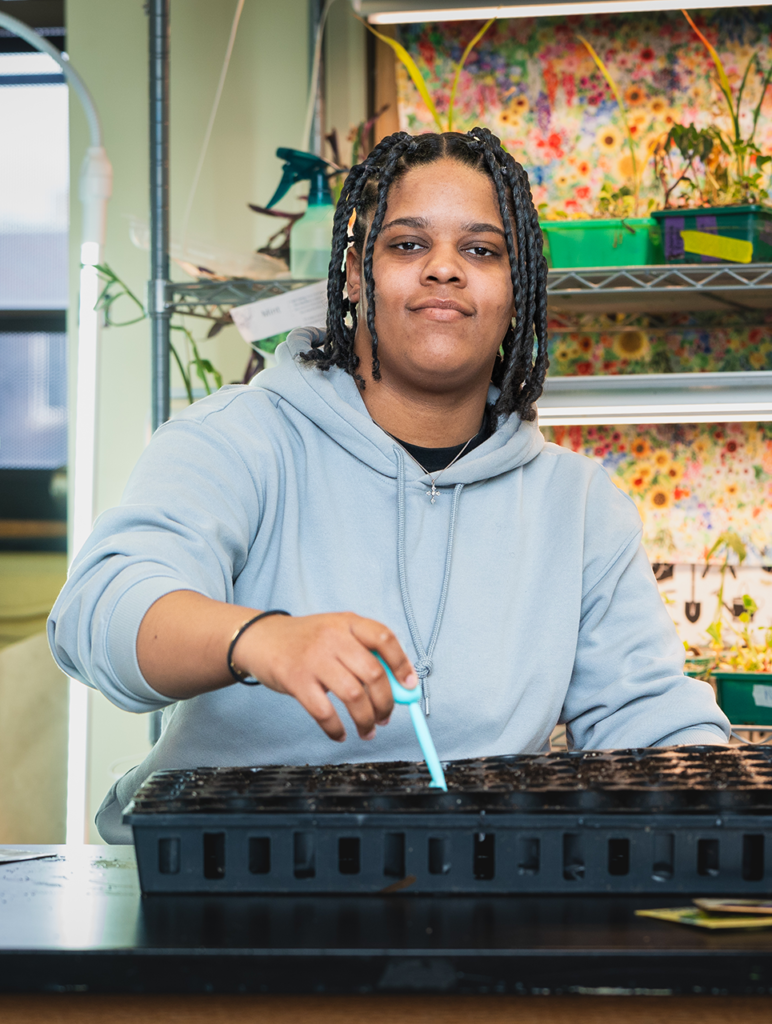Most mornings, Victoria Miles-Chambliss walks down the street from her home in Kingsessing to the Cecil Street Community Garden to drink a cup of coffee. Among the newly-planted native trees and echinacea plants, she sees something that was once a rare sight in her neighborhood: birds.
“Our block has really changed since we put in the garden,” she says. “It’s like an oasis in the middle of Southwest Philadelphia.”
It’s not the only place in the neighborhood that’s seeing new visitors. In dozens of sites around Kingsessing, birds, bees, butterflies and other pollinators are finding new places to spread their wings thanks to $1 million from the federally-funded Pollinator Network spearheaded by the National Fish and Wildlife Foundation, the National Wildlife Federation, Audubon Mid-Atlantic, the John Heinz National Wildlife Refuge at Tinicum and Thomas Jefferson University. Since the summer of 2022, the growing network has been making Southwest Philadelphia community gardens, front yards and planter boxes more friendly for the creatures we all depend upon.
Our block has really changed since we put in the garden. It’s like an oasis in the middle of Southwest Philadelphia.”
— Victoria Miles-Chambliss, Kingsessing resident
It’s an urgent mission. According to the U.S. Department of Agriculture, three quarters of the world’s flowering plants and about a third of the world’s food crops need pollinators to reproduce. But around the world, pollinator populations are disappearing due to habitat loss, disease and environmental contaminants. Dense urban areas covered in asphalt and concrete can be especially hostile environments for pollinators. With strategically-located green space and the right plantings, however, they can thrive in cities. Those same interventions also make cities healthier for people.
“We think of it as a mission overlap,” says Robin Irizarry, manager for the Delaware River Watershed Program for Audubon Mid-Atlantic. “We’re looking at conservation, but we are also really invested in these communities being able to have access to healthy green space.”
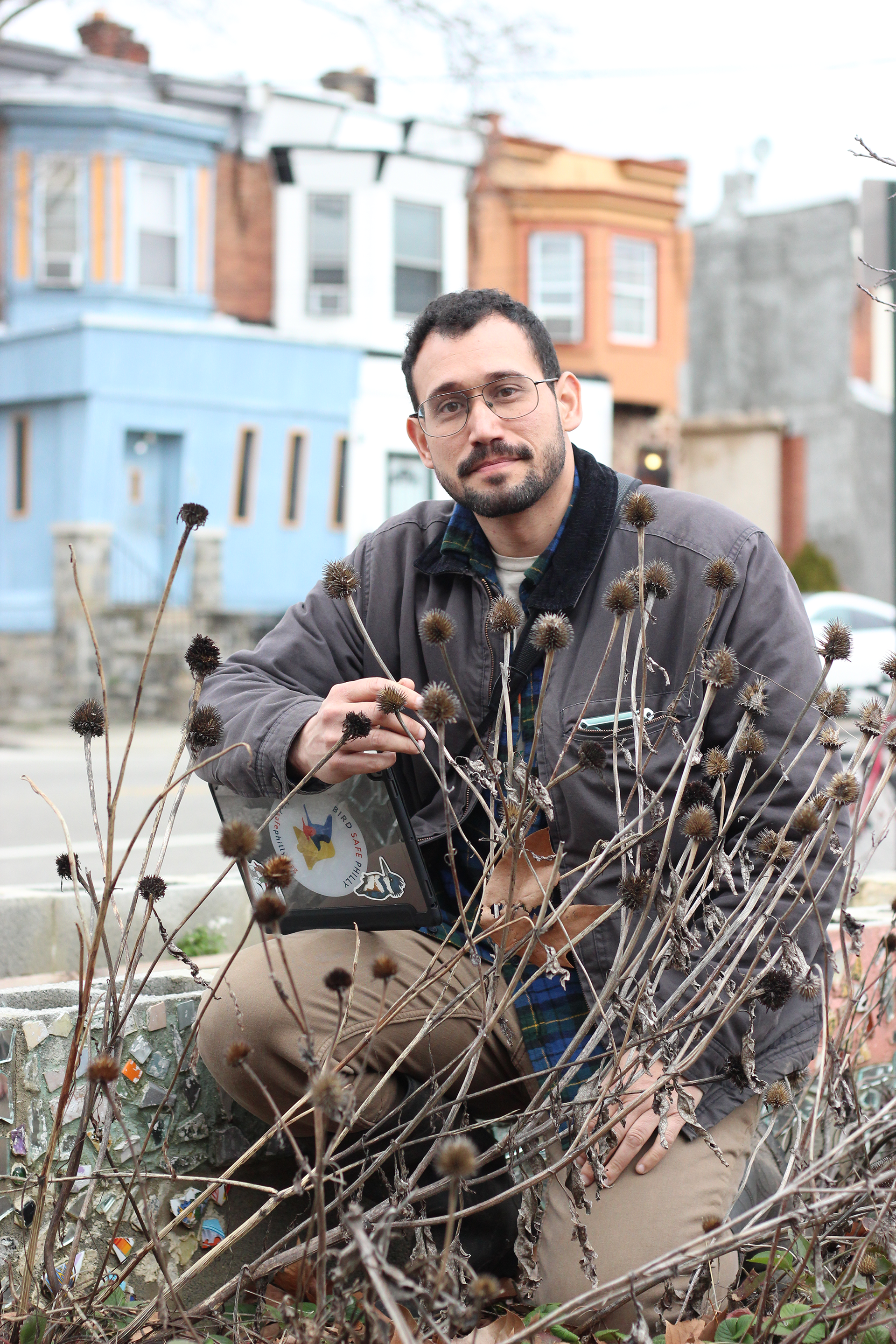
According to Kimberlee Douglas, director of Landscape Architecture at Jefferson, pollinators have three requirements for survival. “They need food, water and cover. And they need them in close proximity. They need networks.”
In many parts of Philadelphia, such networks can be hard to find. While 95% of Philadelphia residents have a park within a 10-minute walk, the amount of green space available varies greatly based on income and race. According to a report from the Trust for Public Land, residents of Philadelphia’s lower-income neighborhoods have access to 44% less park space per capita than richer neighborhoods. Neighborhoods of color, meanwhile, have 42% less park space compared to white neighborhoods.
And just because a space is green doesn’t mean it’s a suitable habitat for pollinators. Some parks in the city contain a simple piece of lawn with none of the native plants — like viburnum, goldenrod and rudbeckia — and water features that pollinators need to survive.
Residents of underserved communities who want to create new parks often face substantial financial and bureaucratic challenges. To overcome them, Douglas and her colleague Drew Harris came up with a way to cut costs and red tape. Their initiative, Park in a Truck, allows communities to design, build and maintain their own green spaces. And as a partner in the Pollinator Network, it’s helping those communities ensure that they provide habitat for pollinators.
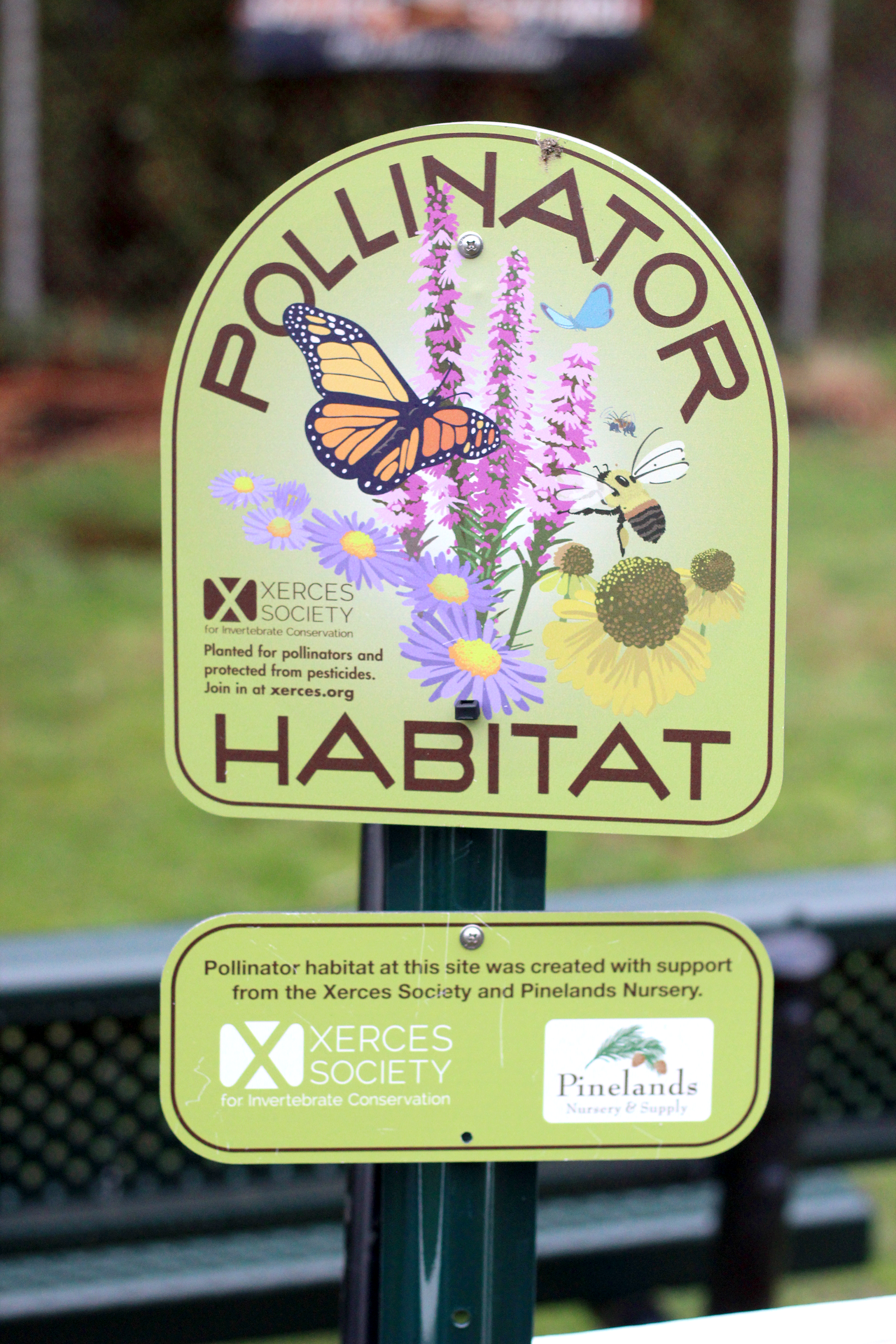
Since these spaces don’t require poured cement, they’re much cheaper to construct than conventional parks. “With Park in a Truck, it’s $10 to $12 per square foot to do a park,” Douglas says. “If you were to do a typical park with concrete and lights that could be $50 or $60 per square foot.”
The modular nature of the Park in a Truck makes it easy for community members to participate in the design process. That was the case for the Cecil Street Community Garden. “After the drawings were done, we placed them on my railing on my porch and we had neighbors come, take a piece of paper, and write whether they wanted option A or option B,” says Miles-Chambliss. The group tallied the votes and the more popular design — one that provides ample benches and chairs for facilitating conversation between neighbors — became reality.
Park in a Truck has helped large community gardens like Cecil Street take shape. It has also helped establish green spaces on a much smaller scale, including front yard gardens and street planters. Bringing nature closer to home is good for pollinators and people alike, Douglas says. “If you’re 3 or 83, 10 minutes is a long walk to get to a park. I would like a park on every block, so instead of going 10 minutes to get to a park, you just have to go 30 seconds.”
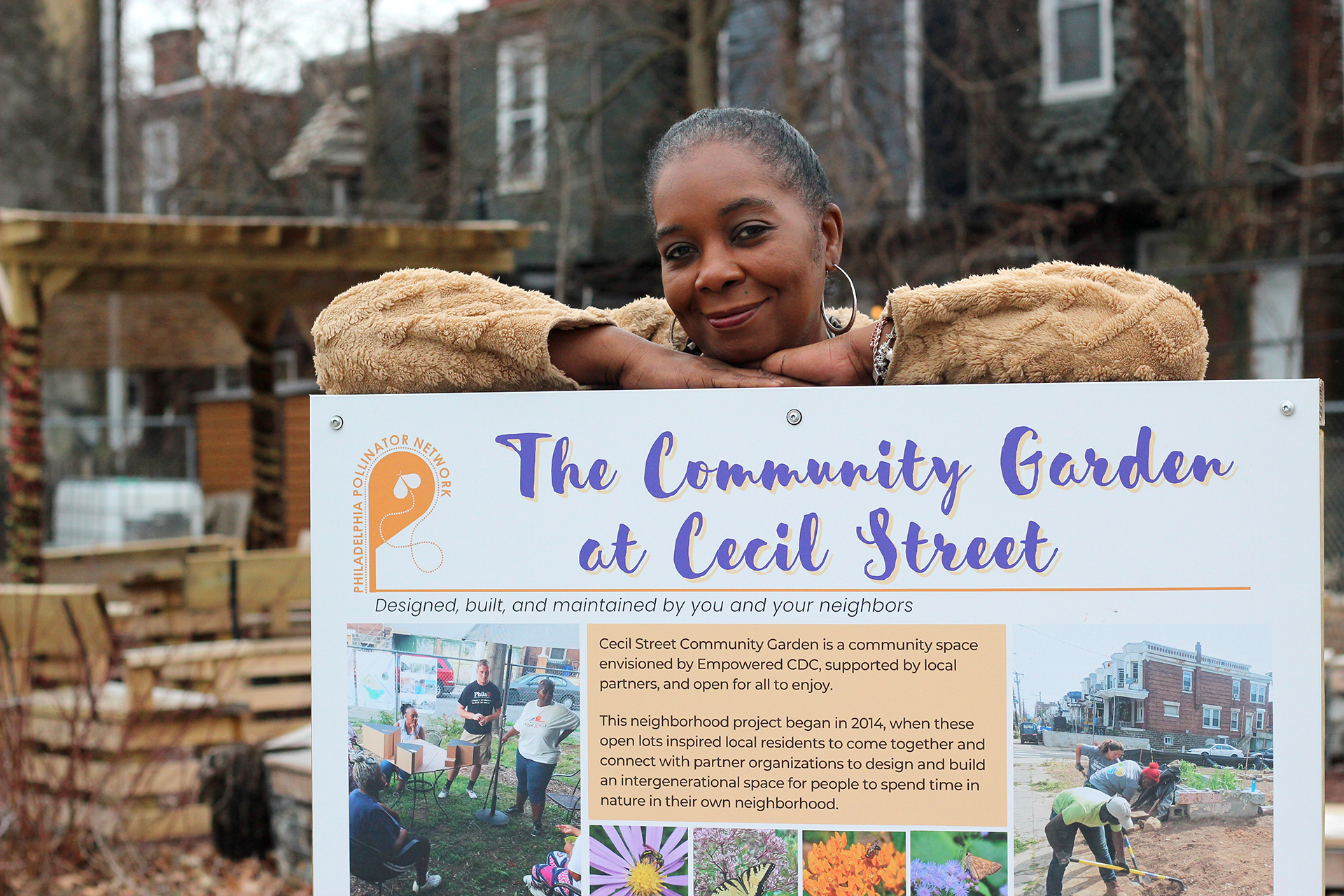
Greg Thompson shared Miles-Chambliss’ desire for more green space in Kingsessing. A few years ago, he started dreaming up a brighter future for a lot at 5900 Greenway Avenue, just a few blocks from the Cecil Street garden. For decades, the space had been used as a dumping ground for tires, sofas, mattresses and abandoned cars. But Thompson and his neighbors knew it could be something more.
“It was a major effort,” he says. “In 19 months, we were able to clear it, stabilize it and plant grass. Then slowly it started to come together.” Thompson and his collaborators added benches, lights and a wall filled with large photographs of community members who’ve passed away. In 2019, the transformed lot officially opened as the Glenda Ann Christopher Memorial Park and began serving, as Thompson puts it, as “a commercial for the community.” In the summers, neighbors use the park to host wedding receptions, birthday parties and baby showers.
After the addition of a pollinator garden last April, Thompson says, the park started attracting some new visitors. “A week or two after it went in they were there — bees, birds, butterflies and a lot more insects than we’ve ever seen,” he says.

For young people in the neighborhood, the revival of natural space is both an educational and economic opportunity. Youths hired through Park in a Truck’s Park Ambassador program are paid to keep the park clean. They’re also keeping tabs on the pollinators. “They’re using apps like iNaturalist to figure out what pollinators are there and get to know them. Who are the regulars throughout different seasons? What plants do they like visiting more than others?” says Carmelita Rosner, a community engagement specialist at the John Heinz Refuge.
Thompson wants to see more of those opportunities come to the neighborhood. In the course of his work as the owner of a land care company, he sees lots all over Southwest Philly that have potential to become the next green outdoor community center, and he’s already started to develop some of them. “Nature is coming back to the community,” he says.
Making Philadelphia more friendly for pollinators doesn’t necessarily require entirely new green spaces. According to Irizarry, gardeners throughout the city can make a big difference simply by changing the kinds of plants they choose and how they care for them. “Conventional landscaping gravitates toward plants that are bug-resistant and look immaculate all the time,” says Irizarry. “While they may serve some aesthetic purpose, they’re not really fulfilling an ecological purpose.”
Native plants, like flowering dogwood, inkberry holly and blueberries, he says, are not always the most readily available or affordable. But if people can access them and maintain them properly, they can provide an invaluable boost for pollinator populations. “We’re not tidying up every leaf that falls. We’re not blowing leaves with a leaf blower,” he says. “We want to maintain those because we know that some of those beneficial native insects are actually spending the winter in those leaves. And the birds that are coming to our gardens are rummaging through those leaves looking for some of those bugs to eat.”
The Pollinator Network, Irizarry says, can’t make every green space in the city suitable for pollinators. But it can set an example for others who believe in its mission.
“There’s certainly a lot more to be done to green our neighborhoods and make these spaces better for people, pollinators and birds,” says Irizarry. “We’re hoping some of these spaces really just serve as demonstration spaces and build momentum for this type of thoughtful approach to designing urban green space.”

